Tervuren Park is a public park located on the outskirts of Brussels in the town of Tervuren, Belgium. The main attractions of Tervuren Park include the Royal Museum for Central Africa, the King’s Pavilion, and its scenic landscapes. The Royal Museum in Tervuren Park houses extensive exhibits and providing insight into Africa’s history and Belgium’s colonial past. The King’s Pavilion, located in the park, contains preserved royal meeting rooms and detailed woodwork. Visitors can also explore Tervuren Park’s gardens showcasing diverse plants or walk along trails encircling ponds. The best time to visit Tervuren Park is from April to October. The flowers and trees blossom during spring, while summer offers long daylight hours during this period. It also tends to be less crowded earlier or later in the day.
Contents
- What does WonderfulWanderings think of park of Tervuren?
- What is Tervuren Park?
- Where is Tervuren Park?
- What is the history of Tervuren Park?
What does WonderfulWanderings think of park of Tervuren?
When I was little, my grandparents often took me to the park of Tervuren in the Flemish Brabant province of Belgium. We’d go feed the ducks and swans there, walk around the lake and finish with an ice cream or a pancake at the bistro – of course we would. When I was little, I visited the Royal Museum for Central Africa located in that park. When I was older, but still fairly little, boyfriend and I went for a walk around the ponds of the park. It’s a place I thought I knew, but it turned out, there was a whole area I’d never seen before.
I visited the magnificent Tervuren Park on Saturday, June 10th, 2023, and I had an absolutely wonderful time. I spent a day walking around the province’s walking route network. I had a map and two routes to follow, of which one was located in the park of Tervuren. I started my walk at the visitor center, which gives information about the park as well as the wider region and looked for the signs indicating which way I had to go. You see, the route network of Flemish Brabant is dotted with “knots”. These knots are numbered crossroads (or better “cross paths”) with signs that mark their number, as well as signs that point you in the direction of other knots. So all you need is a map (you can get one at the visitor center) to determine which route you want to follow and then walk from knot to knot.
My route was as follows: knot 4 > knot 41 > knot 42 > Spanish House > sight number 56 > sight number 57 > knot 4. I entered the forest to the southeast of the “Kasteelvijver” (the first pond of the park) and crossed it diagonally until I reached a central point which linked many paths together. On my way I spotted runners, people walking their dogs as well as some training devices for those who want to get active. It was quiet in the forest and I enjoyed the fresh air while the lanes reminded me of Heverlee Woods, just five minutes from where I live. On the crossroads, I turned right and headed on toward knot 42, which lies right between the “Kleine Vaartvijver” and the “Grote Vaartvijver” (two ponds). I then followed the water northward along a lovely wide walking lane until I reached the “Vossemvijver” (yet another pond).
I was supposed to turn right and go through the woods again before I reached the pond, but there was a sun-drenched bench overlooking the water waiting for me and I could not resist its call. I sat down for a moment, enjoying the lovely weather and watching people go by. Back through the woods afterward and onto the Spanish House. That’s an old mill turned into a cafe with a lovely terrace overlooking the “Molenvijver” (yet another pond, named after the mill). It offers several local beers as well as small bites of Belgian food, like a plate of sausage and it even has tea from Koffie Onan, a cute coffee and tea place in my hometown Leuven.
I was hungry and it was lunchtime, so I ordered one of the Spanish House’s open-faced sandwiches with quark. It came with a salad and topped with radishes. Yum! With renewed energy, I continued my walk on to the part of the park of Tervuren that I knew from childhood, the part around the Royal Museum for Central Africa. As said, the museum is still being renovated and the beautiful building now stands hidden behind construction material.
So I just walked by and went to have a look at the Colonial Palace, built for the World Expo of 1897 and meant to showcase the colonial part of the Expo. You could say it’s the museum’s predecessor. Today’s it’s being used for cultural activities, as well as to house some of the scientific departments of the museum. It’s a nice building, but cars parked in front stopped me from getting a good photo.
One of my favorite spots was the Spanish House, a charming restaurant situated right on the lake, where I enjoyed coffee and took in the breathtaking views. The Africa Museum is also a must-see, with its extensive collection of African artifacts and cultural treasures. I saw families picnicking on the grassy fields, people jogging and biking on the trails, and kids feeding the ducks and swans in the lake. It’s no wonder Tervuren Park is considered one of the top parks in Belgium.
From the Colonial Palace, it wasn’t far anymore to go back to my car. I’d parked it in the underground parking lot below the Markt (market square) where the visitor center is located and was happily surprised that I only needed to pay €3,6 for 3 hours of parking. That’s a good deal in Belgium!
What is Tervuren Park?
Tervuren Park is a large and beautiful park that is one of the entrance gates to the Sonian Forest, a vast and ancient forest that covers parts of Brussels and Flanders. It is also home to the Royal Museum for Central Africa, which displays the history and culture of Africa, especially the Congo. Tervuren Park was once the hunting domain of the Dukes of Brabant, who built a castle and a chapel in the Middle Ages. The castle was demolished in the 18th century, but the chapel still remains and is dedicated to Saint Hubert, the patron saint of the hunters.
Tervuren Park was transformed in the late 19th century by King Leopold II, who wanted to showcase his private colony, the Congo Free State, at the Brussels International Exposition of 1897. He built a palace, a pavilion, and a series of canals and lakes in the park and brought 267 Congolese people to live in mock villages along the waterways. He also expanded the Avenue de Tervuren, a grand boulevard that connects the park with Brussels, and added a tram and a train line.
Where is Tervuren Park?
Tervuren Park is located in the municipality of Tervuren in Flanders, Belgium, which is 15 kilometers (9 miles) east of Brussels. It surrounds the Royal Museum for Central Africa and is one of the most famous green spaces in Belgium. Tervuren spans 212 hectares (524 acres) and contains curving walking paths that wind through woods, meadows, and gardens. Its central avenue is more than 2 kilometers (1.3 miles) long, lined by hundred-year-old trees like Lebanon cedars and American red oaks.
When was Tervuren Park Opened to the Public?
Tervuren Park has been open to the public since the late 19th century, when King Leopold II transformed the park into an exhibit of his private colony, the Congo Free State, at the Brussels International Exposition of 1897. It was part of the royal domain of the Dukes of Brabant, who built a castle and a chapel there in the Middle Ages, but it was not accessible to the general public until Leopold II decided to make it a public park.
Tervuren Park was the site of the Congo Exhibition, which displayed the natural cultural resources of the Congo and the achievements of the colonial administration. The exhibition attracted millions of visitors, who could see the palace, the pavilion, the canals and lakes that Leopold II built in the park, and the mock villages where 267 Congolese people lived and performed. It also featured a zoo, a botanical garden, and a museum of ethnography and natural history, which later became the Royal Museum for Central Africa.
Tervuren Park remained open to the public after the exhibition and became a popular destination for locals and tourists. It was renovated and expanded several times, and some of the original structures were demolished or modified. Its museum was closed for renovation from 2013 to 2018 and reopened with a new and modern design.
What is the history of Tervuren Park?
Tervuren Park was the hunting domain of the Dukes of Brabant, who built a castle and a chapel in the 13th century. The castle was the residence of several dukes and monarchs, such as John III, Philip the Good, and Charles the Bold. The chapel was dedicated to Saint Hubert, the patron saint of hunters, who was believed to have been martyred in the 8th century.
In the 18th century, the castle fell into ruin and was demolished in 1782 under the reign of Emperor Joseph II. The chapel was the only building that remained and was restored and enlarged. Tervuren Park was still used as a hunting ground but also as a place for leisure and recreation. It was also the scene of some battles during the French Revolution and the Napoleonic Wars.
Tervuren Park was transformed by King Leopold II in the 19th century, who wanted to showcase his private colony, the Congo Free State, at the Brussels International Exposition of 1897. He built a palace, a pavilion, and a series of canals and lakes in the park and brought 267 Congolese people to live in mock villages along the waterways. He also expanded the Avenue de Tervuren, a grand boulevard that connects the park with Brussels, and added a tram and a train line. He also founded the Royal Museum for Central Africa, a museum of ethnography and natural history, which was opened in 1898.
In the 20th century, Tervuren Park remained open to the public after the exhibition and became a popular destination for locals and tourists. It was renovated and expanded several times, and some of the original structures were demolished or modified. The museum was also enlarged and updated and became a center of research and education on Africa. Tervuren Park was also the site of some events and ceremonies, such as the World’s Fair of 1958, the visit of Pope John Paul II in 1985, and the commemoration of the 50th anniversary of the independence of Congo in 2010.
What are the visiting hours of Tervuren Park?
Tervuren Park is open 24 hours. It is free, and visitors can walk, bike, or jog along the paths and trails that crisscross the park. The Royal Museum for Central Africa, which is located in Tervuren Park, is open from Tuesday to Sunday, from 10:00 to 17:00 on weekdays, and from 10:00 to 18:00 on weekends. It is closed on Mondays and on some public holidays, such as January 1, May 1, November 1, and December 25. The entrance fee for the museum is 12€ ($14, £10) for adults, 8€ ($9, £7) for seniors and students, and 4€ ($5, £3) for children and young people.
When is the Best Time to Visit Tervuren Park?
The best time to visit Tervuren Park is from April to October, where the weather is pleasant and comfortable, and high temperature ranges from 14 ℃ (57 ℉) in April to 23 ℃ (73 ℉) in July and August and average lows ranging from 4 ℃ (39 ℉) in April to 13 ℃ (55 ℉) in July and August. The rainfall is also moderate, with an average of 51 milliliters (2 inches) per month. Visitors can enjoy the outdoor attractions of the park, such as the paths, the trails, the water, and the forest, without feeling too hot or too cold during this period.
Is it safe to visit in Tervuren Park?
Yes, Tervuren Park is safe to visit. Tervuren Park is patrolled by police and has good lighting, making it unlikely for crimes to occur. Visitors should still exercise normal precautions like avoiding isolated areas and not leaving valuables unattended.
How much is the Entrance Fee for Tervuren Park?
The entrance fee for Tervuren Park is free. Tervuren Park does not charge any admission fee for visitors. Attractions within the park have separate fees, such as the Royal Museum for Central Africa, which has an entrance fee of 12€ ($14, £10) for adults, 8€ ($9, £7) for seniors and students, and 4€ ($5, £3) for children and young people.
How long can you stay in Tervuren Park?
There is no time restriction on how long one can stay in Tervuren Park. Tervuren Park does not have a fixed closing time. The Royal Museum for Central Africa, which is located in Tervuren Park, is open from Tuesday to Sunday, from 10:00 to 17:00 on weekdays, and from 10:00 to 18:00 on weekends. It is closed on Mondays and on some public holidays, such as January 1, May 1, November 1, and December 25.
How long is the typical visit time in Tervuren Park?
The typical visit time in Tervuren Park is 1 to 2 hours. Tervuren Park is large enough for leisurely strolls but not so massive as to require lengthy explorations. Its key attractions, like the King’s Pavilion and Congo Museum, can be seen within an hour or two. Its pathways and gardens also lend themselves well to short walks rather than full-day hikes.
How to get to Tervuren Park?
There are 3 different ways to get to Tervuren Park from Brussels, depending on one’s starting point and preferred mode of transportation. These are by bike, by public transportation and by train. Firstly, one can bike to Tervuren Park from Brussels. It takes an hour by bike, depending on the biker’s speed and the traffic. Take the bike route that goes along the Avenue de Tervueren, which is a wide and straight avenue that connects Brussels and Tervuren. It has a dedicated bike lane and is lined with trees and buildings. The bike route ends at the entrance of the park, where one can park their bike. Secondly, if preferring public transportation, one can take the tram to Tervuren Park from Brussels. The tram line 44 runs from Montgomery Square to Tervuren Station, which is right next to Tervuren Park. The tram ride takes 40 minutes and costs 2.5€ ($2.85, £2.18) for a single ticket or 7.5€ ($8.55, £6.54) for a day pass. Travelers can buy the tram tickets at the tram stop or on the tram. The tram runs every 10 to 15 minutes, with its last drop at Tervuren Station. Travelers can walk to Tervuren Park’s entrance from there. Thirdly, another option is to take the train to Tervuren Park from Brussels. The train line S8 runs from Brussels Central Station to Tervuren Station, which is the same station as the tram stop. The train ride takes 30 minutes and costs 3.2 € ($3.64, £2.78) for a single ticket or 8.6 € ($9.79, £7.48) for a day pass. Travelers can buy the tickets at the train station or online. The train runs every hour, with its last stop at Tervuren Station. From there, travelers can walk to Tervuren Park’s entrance. Lastly, driving is another option to get to Tervuren Park from Brussels. Tervuren Park is accessible by car via the E411 motorway, which connects Brussels and Luxembourg. Drivers can take exit 2 (Tervuren) and follow the signs to the park. The drive takes 20 minutes, depending on the traffic. Drivers can park their cars at the large parking area near the east exit of the park. The parking is free and has enough space for many cars.
What are the house rules of Tervuren Park?
Listed below are the house rules of Tervuren Park:
- Respect nature and the environment: Tervuren Park is well-maintained and has security measures in place. Visitors should not litter, damage, or disturb the plants, animals, and structures in the park.
- Keep dogs on a lease: Tervuren Park is a dog-friendly park that allows visitors to bring their dogs, however, dogs must be kept on a leash at all times, except in the designated dog areas. Dogs should not run free, chase, or harass other animals or people in the park. Dog owners should also clean up after their dogs and dispose of the waste properly.
- Follow the opening hours: Tervuren Park is open from 08:00 to 14:00 on Fridays and Saturdays, while it may close early on other days, depending on the season. It does not have a fixed closing time, but it is advised to leave before dark for safety reasons.
- Obey the signs and instructions: Tervuren Park has various signs and instructions throughout the park to guide and inform the visitors. The signs may indicate the directions, the names, the histories, or the rules of the attractions and activities in the park. It may also warn the visitors of potential hazards or restrictions in the park. Visitors should read and follow the signs and instructions carefully and respect the authority of the park staff.
- Enjoy the park responsibly: Tervuren Park is a safe and enjoyable destination for tourists. It has a lot of attractions and activities to offer, such as the Royal Museum for Central Africa, the French-style garden, the canal, the water mill, the chapel, the church, and the castle. It is also a good place for hiking, biking, picnicking, and relaxing. Visitors should enjoy the park responsibly and not engage in any illegal, immoral, or disruptive behavior in the park.
What do visitors say about Tervuren Park?
Tervuren Park receives positive reviews from visitors praising its beautiful scenery and greenery. Its ponds, gardens, wooded areas, and open green spaces provide a peaceful natural setting within easy reach of Brussels’ urban environment. Visitors describe the landscape as an ideal location for relaxed strolls, reading a book, or just appreciating the outdoors. Visitors say the Royal Museum for Central Africa in Tervuren Park offers an extensive, eye-opening look at African art, artifacts, and history. The King’s Pavilion receives praise for its impressive Moorish-inspired architecture dating back to the late 1800s.
Visitors also emphasize Tervuren Park’s convenience, with direct public transportation connections to central Brussels. Visitors appreciate being able to get away from the city streets and crowds without a long commute. They note that Tervuren Park’s free admission and location right next to the town of Tervuren make it a worthwhile place to spend a few hours.
Visitors remark that Tervuren Park is family-friendly and has something for all ages to enjoy. The wildlife around the ponds, the museum exhibits, the expansive lawns, and the cafes, parents say their children were entertained and engaged throughout their visit. Visitors also comment that those looking for some exercise can enjoy the park’s paved pathways for walking, running, biking, or skating.
Is it worth it to visit Tervuren Park?
Yes, Tervuren Park is worth visiting. Tervuren Park offers beautiful scenery perfect for leisurely strolls, including gardens, ponds, and wooded areas. It also contains fascinating attractions like the Royal Museum for Central Africa, which provides insight into Belgium’s colonial past through its extensive African artifacts and exhibits and frequently hosts events like concerts and festivals.
Are there any guided tours to Tervuren Park?
Yes, there are guided tours available for Tervuren Park, with no reservations required. The Royal Museum for Central Africa offers daily guided tours of its exhibits and collections. The guided tours are included with the price of admission to the museum, which is 12€ ($14, £10) for adults, 8€($9, £7) for seniors and students, and 4€ ($5, £3) for children and young people. Walking tours of Tervuren Park are offered on weekends during the summer months. It is a 90-minute tour led by volunteer guides that explore Tervuren Park’s notable landmarks, gardens, and ponds while sharing informational anecdotes. The walking tours cost 4€ ($5, £3) per person and start from the museum entrance.
PIN FOR LATER

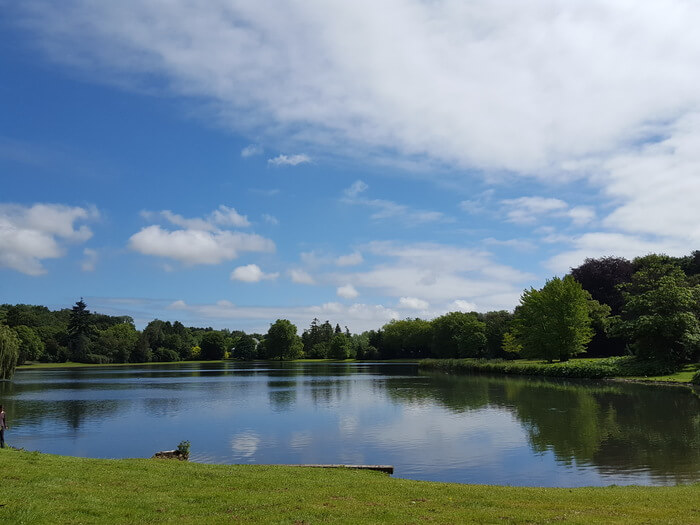
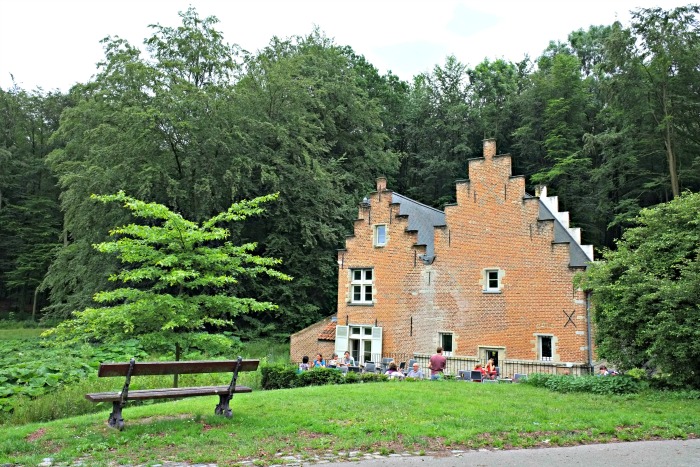
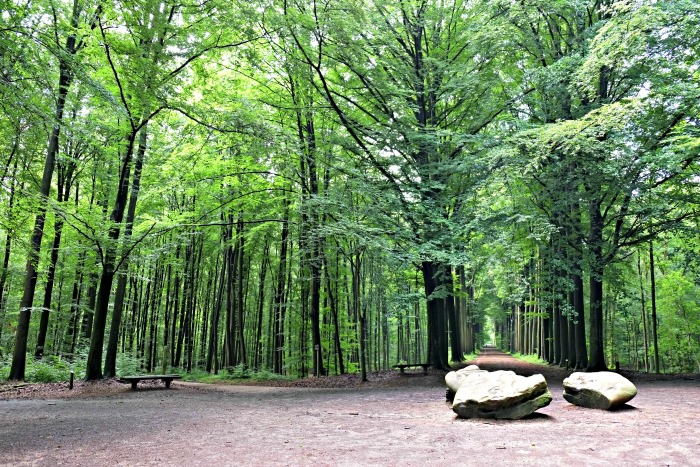
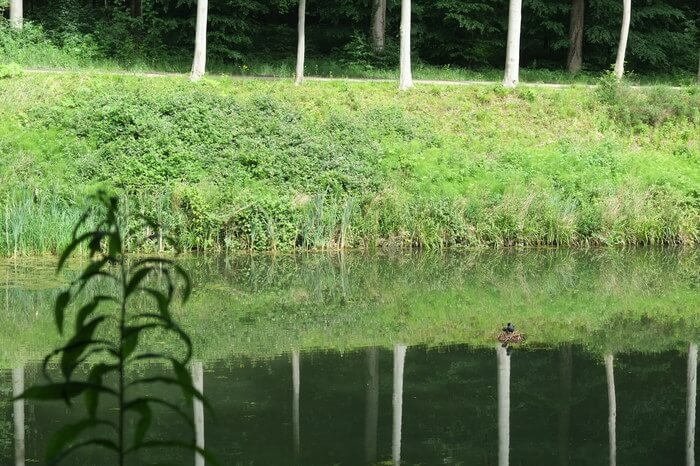
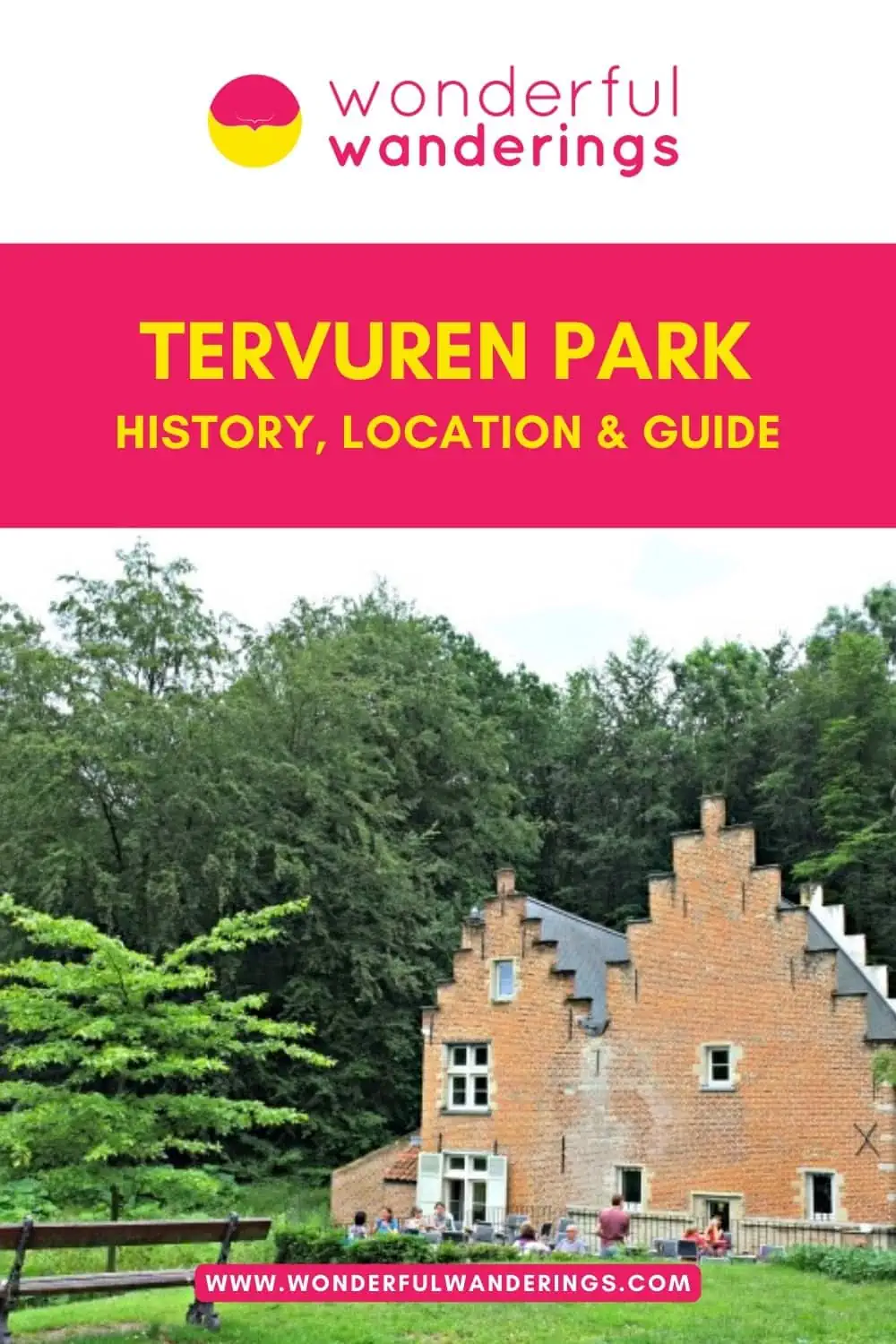

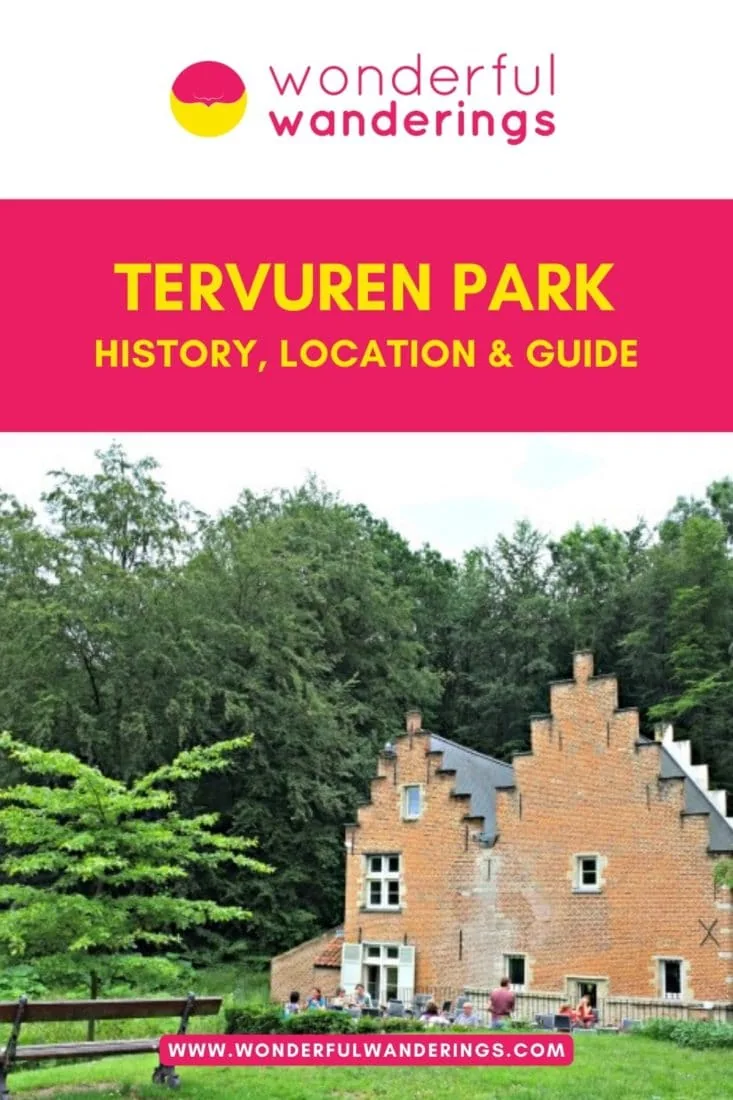
Tim UrbanDuniya says
This place looks lovely!! And that lunch – yum!
Sofie says
It really is!
Unfortunately, the lunch place is currently closed for renovations. I think/hope it’ll be open again next summer.